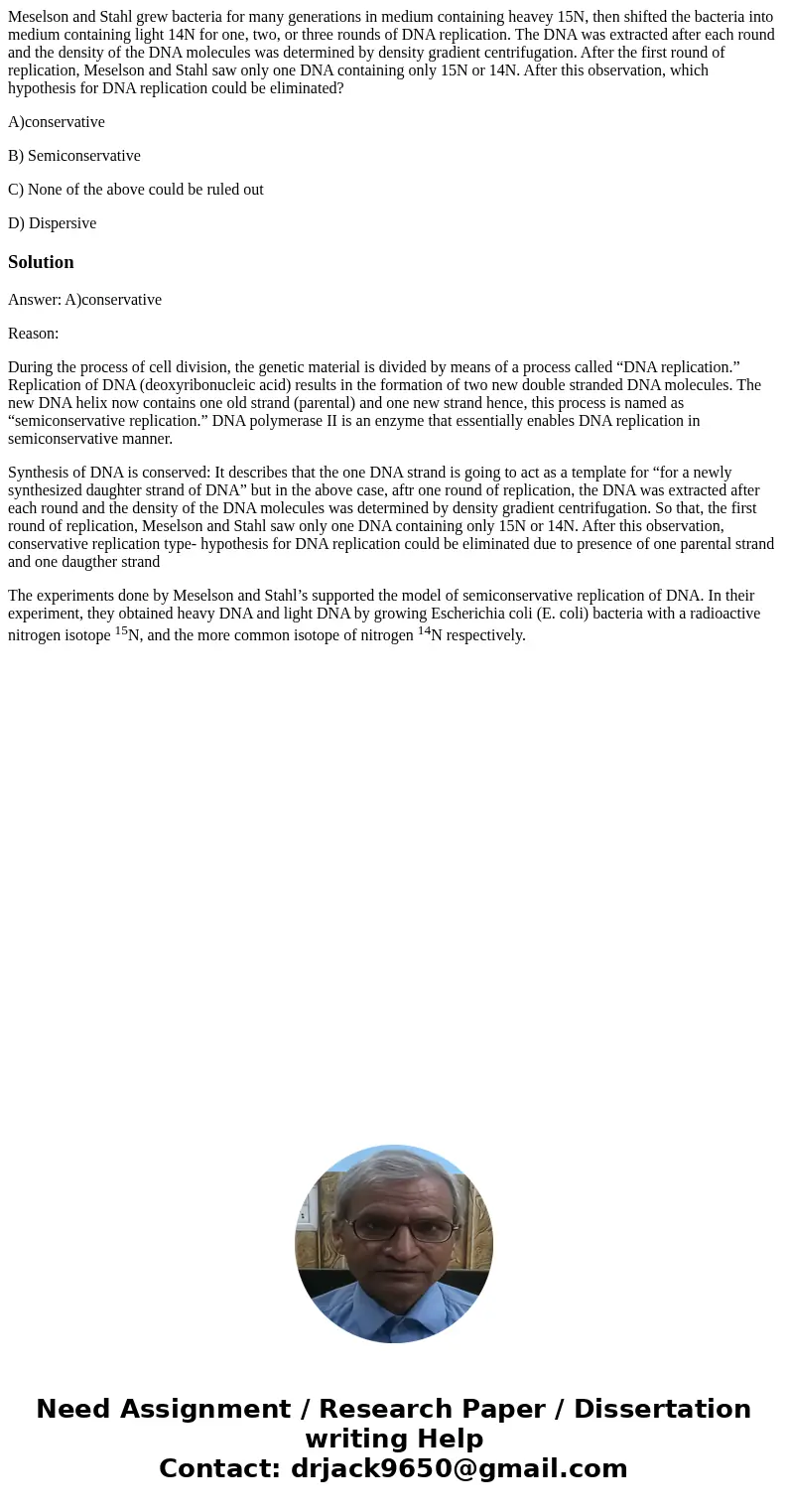Meselson and Stahl grew bacteria for many generations in med
Meselson and Stahl grew bacteria for many generations in medium containing heavey 15N, then shifted the bacteria into medium containing light 14N for one, two, or three rounds of DNA replication. The DNA was extracted after each round and the density of the DNA molecules was determined by density gradient centrifugation. After the first round of replication, Meselson and Stahl saw only one DNA containing only 15N or 14N. After this observation, which hypothesis for DNA replication could be eliminated?
A)conservative
B) Semiconservative
C) None of the above could be ruled out
D) Dispersive
Solution
Answer: A)conservative
Reason:
During the process of cell division, the genetic material is divided by means of a process called “DNA replication.” Replication of DNA (deoxyribonucleic acid) results in the formation of two new double stranded DNA molecules. The new DNA helix now contains one old strand (parental) and one new strand hence, this process is named as “semiconservative replication.” DNA polymerase II is an enzyme that essentially enables DNA replication in semiconservative manner.
Synthesis of DNA is conserved: It describes that the one DNA strand is going to act as a template for “for a newly synthesized daughter strand of DNA” but in the above case, aftr one round of replication, the DNA was extracted after each round and the density of the DNA molecules was determined by density gradient centrifugation. So that, the first round of replication, Meselson and Stahl saw only one DNA containing only 15N or 14N. After this observation, conservative replication type- hypothesis for DNA replication could be eliminated due to presence of one parental strand and one daugther strand
The experiments done by Meselson and Stahl’s supported the model of semiconservative replication of DNA. In their experiment, they obtained heavy DNA and light DNA by growing Escherichia coli (E. coli) bacteria with a radioactive nitrogen isotope 15N, and the more common isotope of nitrogen 14N respectively.

 Homework Sourse
Homework Sourse